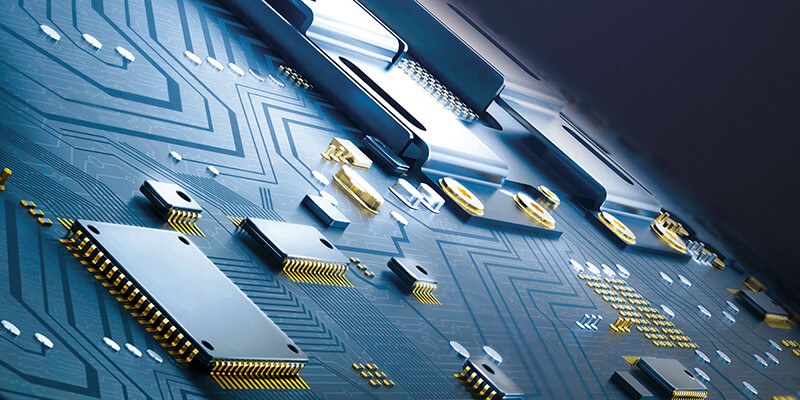What is NAND Flash Memory & how does it work?
An array of modern storage solutions & Solid-State-Drives are based on NAND Flash technology, but do you really know how they works?In short, NAND Flash is a type of Non Volatile Memory (NVM) technology that stores data in arrays of memory cells that are made, either through charge trap technology or Floating-Gate MOSFET transistors. It is a cost competitive NVM technology that has become a serious contender to replace magnetic rotating storage media (HDDs). The technology is used in a growing amount of storage devices such as USB Flash drives, Solid-State Drives (SSDs) and memory cards like microSD and SD cards.
What does NAND Flash consist of?
NAND Flash consists of MOSFET (Metal Oxide Semiconductor Field Effect Transistor) transistors. These can be seen as electrical switches in which current flows between two terminals (called source and drain). A NAND Flash cell is based on n-channel MOSFET transistor in which an additional layer is inserted between the Control Gate and the silicon substrate. This layer is electrically isolated from all the other terminals of the cell and is called the Floating Gate (FG). Any electrical charge trapped in this layer has the effect to change the threshold of the cell allowing it to store different bits of information. Because the Floating Gate is isolated, the charge stored is retained even when power supply is turned off.
How does NAND Flash Memory work?
By applying a high voltage to the control gate, while the source and drain are grounded, the electrons in the channel can gain enough energy to overcome the oxide barrier and move from the channel into the Floating Gate. This process is called Fowler-Nordheim Tunneling effect and the process of trapping electrons in the FG is the programming (or “write”) operation of a Flash device which corresponds to a logical bit 0. On the contrary, the erase operation extracts the electrons from the Floating Gate allowing to switch the data stored in the cell to a logical bit 1. Erase is also based on Fowler-Nordheim Tunneling effect and is performed on a portion of the array called “Block” (normally few MB of the whole array). All the bit of the Block will be turned to 1s after erase.
What is the main problem with NAND Flash?
NAND Flash cells wear out because program and erase cycles eventually damage the isolating layer between the FG and the substrate. This reduces data retention and can lead to loss of data or cells unintentionally being programmed (Program Disturb). A high quality Flash Memory Controller is invaluable in modern storage solutions and is the key component, conserving and restoring data quality, maintaining reliable functionality and a long lifetime for the Flash. This is especially important for challenging applications such as mobile automation, robotics and telecommunications, and in general industrial applications.
In today growing technological world NAND Flash is becoming the most common type of storage for mass markets. This is due to a range of factors, including, affordability, sturdiness, storage density, access speeds and space in which it demands. Like you have seen, phones, tablets and laptops are only getting sleeker, but NAND Flash isn’t only used in the consumer market; its value throughout industrial applications is ever growing and should not be overlooked.

